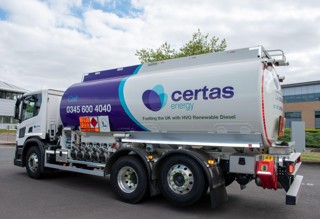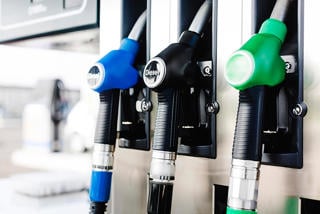Not only will fuel duty increase by 0.76p a litre on January 1st but VAT rises by 2.5% too. Beyond that there will be another inflation-related duty increase in the spring. Prices could also be adversely affected by the ups and downs of the commodities market, international politics, security issues and ecological disasters like the Gulf incident. One thing is almost certain, fuel prices are highly unlikely to fall anytime soon.
“In the short-term, fuel prices will inflict more pain on drivers and business,” says Luke Bosdet, a fuel expert at the AA. “It may well be an ordeal we have to endure before a recovered economy restores a less volatile fuel market, though commodity speculation continues to cast a shadow.”
However, getting driving employees to think economy first and pace second can pay real, quantifiable dividends for those picking up the fuel bill. Most occupational drivers took their driving test when there was no compulsory economy driving element, so driving this way, particularly if the fuel is fully funded, won’t necessarily be second nature.
AA DriveTech has now devised a shortened version of its popular half day eco driving course. Aimed specifically at corporate drivers, the new 90 minute course is short on talk and big on the practical things that help squeeze every last mile out of a gallon. The instructors delivering the training will not only combine advice from the passenger seat with a ‘this-is-how-to-do-it’ demonstration drive but also delegates will have the chance to compare their fuel economy performance both before and after training.
“We’d be disappointed if those trained drivers wouldn’t be able to achieve a regular and enduring 10% improvement in fuel economy after the course,” says Paul Holmes of AA DriveTech. “The customer feedback we’ve had suggests that our hints and tips are put into practice by the vast majority of trainees long after the course is over, simply because they are straightforward, memorable and practical to implement. Those fuel savings really can make a big difference to the bottom line.”



















adamrollins - 18/11/2010 14:39
One way for drivers to understand their driving efficeincy is to review their performance against a calculated pence per mile figure. Better still, if the driver has a fuel card, they can then be charged at actual pence per mile for their private mileage by using Midas FMS to handle the fuel card spend, allocating fuel to business and private use. Fully expensed drivers will usually find paying for their own fuel at actual ppm cheaper than paying BIK. The benefits of the training will certainly pay off as performance is monitored constantly and the results feed back directly to drivers' pockets determining the rate paid for private use. This gives drivers a stake in maximising the return on the valuable training they receive. Adam Rollins, Business Development Manager, Midas FMS. http://www.midas-fms.com